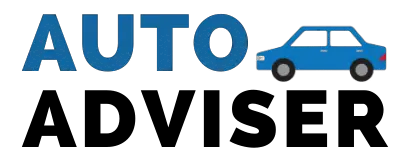Disclosure: As an affiliate I may earn a commission on any qualifying purchases, including those from Amazon, at no extra cost to you -read more
It is not as simple as it sounds. You insert the key, turn on the ignition but the car does not start, and you realise that there might be a problem with the car’s battery. The thing causing confusion, is that the car’s power does still come on as the lights still seem to work.
The starting system is a combination of many small and large components which work in a sequence that leads to the engine fire up. If a single component is not working, the car won’t start.
There are more than half a dozen reasons that can cause the car engine not to start. Some problems can be diagnosed easily and fixed at home, while the more advanced engine problems will need to be fixed at the local garage or workshop.
If the engine does not crank then the problem is associated with a faulty battery or starter motor. On the other hand, if the engine does crank but does not start then there can be a number of reasons.
In this guide, we’ll share some of the most common causes for a non-starting car that still has power.
1. Discharged or Dead Battery
If the electrical components, including the lights, work but the engine does not crank, then either the battery is dead or discharged to a very low level. Dashboard lights only need a few amperes to turn on but the starter motor needs a battery that is fully charged.
Possible Fix: Open the bonnet and have a look at the battery terminals. Sometimes you may see a white or greenish colour on the battery terminals due to corrosion and rust. It creates a layer which restricts the alternator from charging the battery properly and it eventually becomes discharged.
- Remove the negative terminal first and then the positive terminal
- Remove the terminals from the wires and clean them using a battery terminal cleaner
- Clean the battery points as well with cleaner and reinstall in reverse order
- Jump start your car and drive for some time until the battery has enough charge to start the car itself.
If you open the bonnet and see that the battery terminals are clean then the battery is likely to be dead, you will need to perform a battery test using a hydrometer. A very weak battery cannot hold it’s charge and will need to be replaced.
2. Bad Starter Motor
If you’ve established that the battery is in good health, but nothing happens when you turn the ignition key, there is a strong possibility that the starter motor is dead.
Sometimes you will hear a click from the starter motor when you try to start the car, signalling that the motor is broken. But they do stop working and fail suddenly without any warning.
Possible Fix: It is difficult to replace the starter motor by yourself as it meshes with the engine flywheel. Taking the car to the local garage is the best option. You can usually start the car by rolling it down a hill or asking for a push start from someone else. Once the car starts to drive, take it to the nearest workshop to get it fixed.
3. A Fuse is Blown
Fuses are a safety device in the car. Each electrically powered device has its own fuse according to the current rating and they all are located in the fuse box. Consult the car’s owner manual to find out the exact position of the fuse box and how to open it.
Once you open the box look if any of the fuses in the box are burned or damaged. If you find one then you need to replace it with another fuse which is of same current rating or higher.
Possible Fix: There are normally spare fuses in the box to replace in need of an emergency. You can remove the fuse of a secondary part like headlights and insert it in place of a primary part like the fuel pump to start the car.
4. Ignition Switch Problem
The ignition switch is like a control switch which provides the power to the mechanical components in order to start the car. If the switch malfunctions there will be no power delivery to the mechanical components and the car won’t start.
Diagnosis and Fix: Turn the ignition key to ON position and if the dashboard lights do not glow then the ignition switch is bad. Contact your local garage or mechanic to fix the problem.
5. Fuel Pump Problem
The fuel pump is responsible for transferring fuel from the fuel tank to the fuel injectors. If the fuel pump stops working then the engine won’t start. On current cars fuel pumps are made for life but they can fail at anytime.
Diagnosis and Fix: The fuel pump is located inside the fuel tank. Turn the ignition key to ON position and try to listen for a sound of a motor coming from the fuel tank. If there is no sound that is good indication that fuel pump is dead. Only a professional mechanic can fix the problem.
6. Blocked Fuel Filter
The fuel filter is located outside the fuel tank and filters any harmful contaminants from reaching the injectors and engine. They have a limited life and needs to be replaced at the regular intervals.
If you don’t change the filter at the required interval then a blocked fuel filter can be another reason that your car isn’t starting but the lights are still turning on.
Possible Fix: The filter is mostly located underneath the car close to the fuel tank. It is very easy to replace the filter. Check in the owner’s manual to understand the procedure but it normally goes as follows:
- Lift the car above the ground using car jack and steel jack stand or a lift
- Locate the fuel filter
- Remove any holding clip or bracket
- Remove the fuel lines and clean the fuel line connectors
- Install the new filter
7. Faulty Spark plug
The battery is fine, starter motor, fuel pump and filter is good but the engine still does not start. The next thing to check is your spark plugs, these ignite the air fuel mixture when the piston reaches top dead centre. A bad spark plug will not generate any spark and the car won’t start.
Possible Fix: On most modern cars it is easy to replace the spark plug. Just remove the engine cover, ignition coil, use spark plug socket to remove the bad spark plug and install the new part. Of course, there is always the option of taking the car to a local garage.
8. Empty Fuel Tank
Well this is the easiest and the most neglected reason but we had to include it just in case. The problem is that sometimes the fuel level sensor or needle in older cars stop working and you do not know that how much fuel is left in the car. When the car stops on the road or does not start and you find out that there is no fuel in the car, it can be a bit embarrassing but easy to fix.
We hope this has been a useful guide to the most common causes for your car not working.
Featured image credit: Daniel @ bestjumpstarterreview.com on Unsplash

An automotive engineer by profession, Farruk loves to work around cars and is a huge F1 fan (McLaren all the way!). Farruk is a big advocate of moving towards zero carbon emission vehicles, but still loves nothing more than getting behind the wheel of a pure mechanical car.


